RV Prototype (RV = Room Vehicle) by Greg Lynn
Interieur 2012: American architect and designer Greg Lynn has created a prototype for a motorised compact-living cocoon that rotates to provide space for relaxing, sleeping and bathing (+ movie).
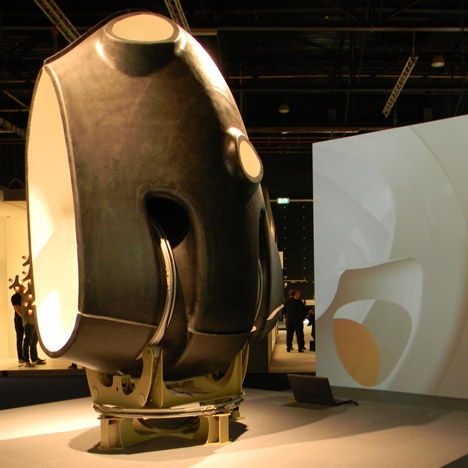
Lynn presented a 1:5 carbon fibre scale model of the concept, which is inspired by a space station and is called RV Prototype (RV = Room Vehicle), at the Interieur 2012 design biennale in Kortrijk, Belgium, last week.
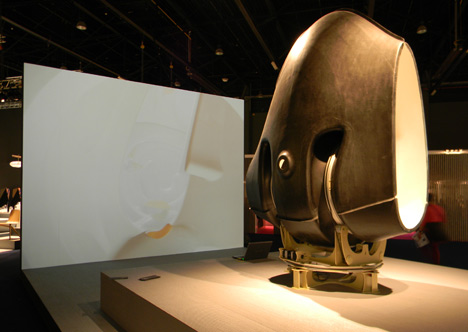
"The 1:5 scale model in Kortrijk is always moving, but the idea is that three basic surfaces would be the orientations and everything in between would be momentary," Lynn told Dezeen. "For example, zero degrees is living, 90 degrees is kitchen and bath and 180 degrees is sleeping and relaxing."
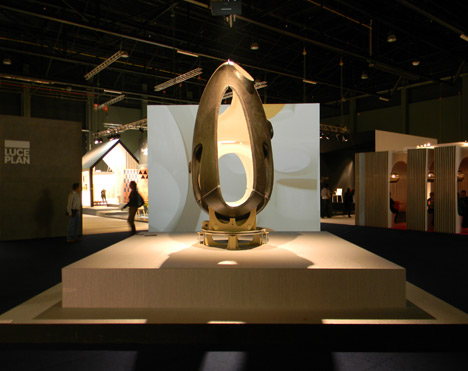
Lynn was partly inspired by the sedate and lazy lifestyle offered by luxury recliner chairs, where entertainment and refreshment is always within arm's reach, but he also wanted to create a stimulating and active environment for the user.
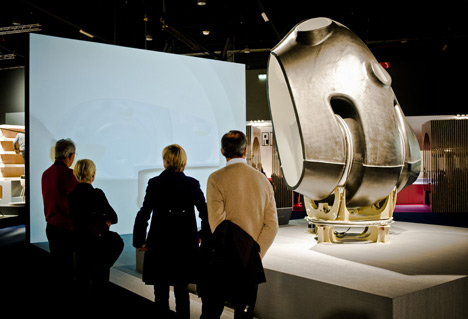
Above: photograph is by Wouter Van Vaerenbergh
The user of the RV Prototype would need to clamber around inside the cocoon in order to access all its functions as it rotates into different positions.
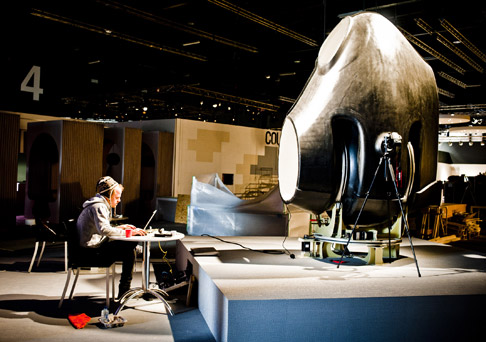
Above: photograph is by Wouter Van Vaerenbergh
A scaled-up version of the prototype would utilise its entire interior surface to provide 60 square metres of floor space, much like in a space station.
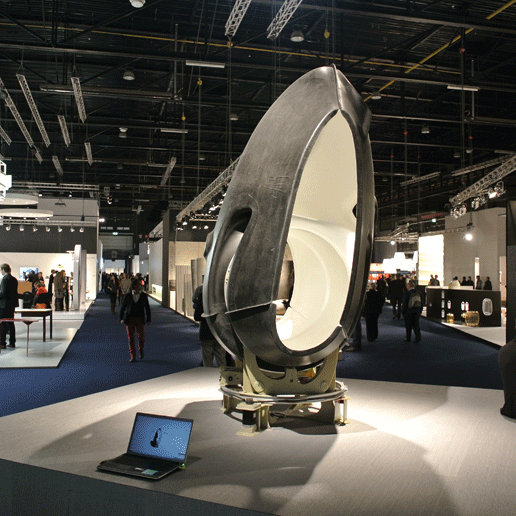
The prototype was presented as part of the Future Primitives programme at the Interieur design biennale – see all our stories about Interieur. London design studio Troika also contributed to Future Primitives with an installation that used fresnel lenses to refract beams of light into illusory arches.
Above: animation is by Greg Lynn Studio
Other projects involving Lynn we've featured on Dezeen include his Golden Lion-winning furniture made from recycled children's toys and a project by some of his students to design a conceptual boat factory.
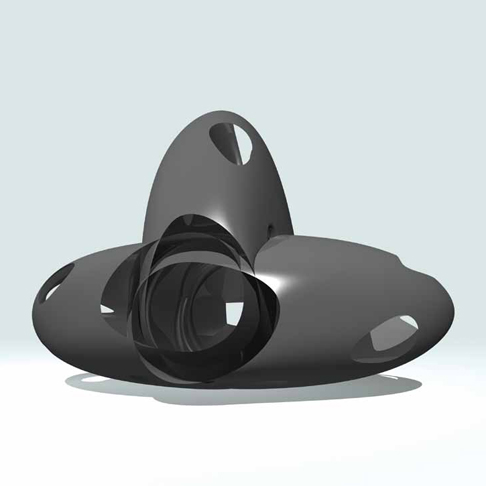
See all stories from Interieur 2012 »
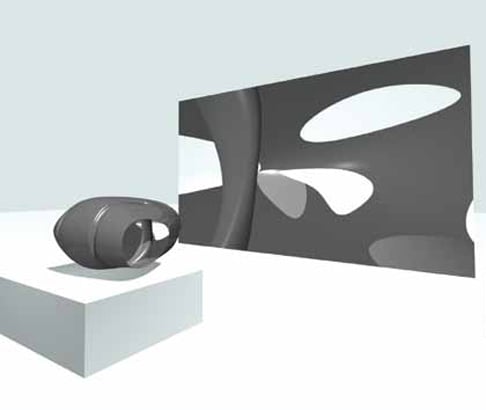
Photographs are by Dezeen except where stated. Images and sketches are by Greg Lynn.
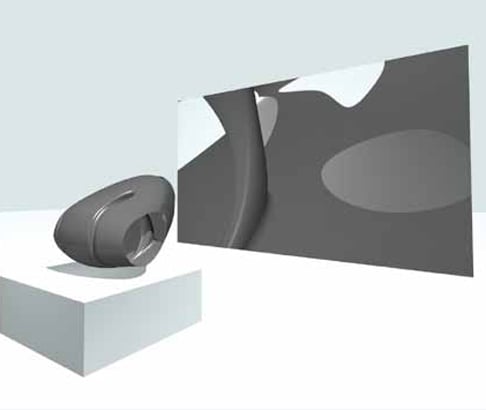
Here's some more information from the designer:
RV (Room Vehicle) Prototype
Where the surface meets the machine
Because of contemporary digital communication, entertainment and the intelligent control of machines, the world expects more from the physical environment today. Mobility and high performance must be calibrated with reduction in footprint and efficiency. The bespoke comfort of a one-of-a-kind specified automobile is merging with the living room couch and television where everyplace aspires to be a first class flat bed seat with colour temperature and intensity controlled lighting, internet access and entertainment on-demand.
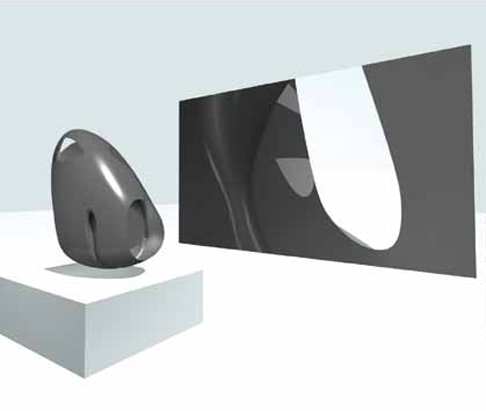
In order to move, robotic motion from industry is brought to motion types germane to reclining furniture. However, in the case of the mechanical or robotic reclining lounge chair, by placing all of the leisure functions at arms’ reach from a stationary seat the activities of living and the occupant’s musculature tend to contract to a stationary point. Despite the action and dynamism of the minivan lifestyle replete with sport, design and professionalism, most equate the recliner with sedentary consumption.
The RV Prototype brings intelligent movement and compact comfort to the living space as an alternative to over-inflated ‘McMansions’ by reducing footprint and material while also bringing the enthusiasm and activity of theme park, a hamster ball, an exercise machine, a natural landscape or sporting equipment to the human living sphere.
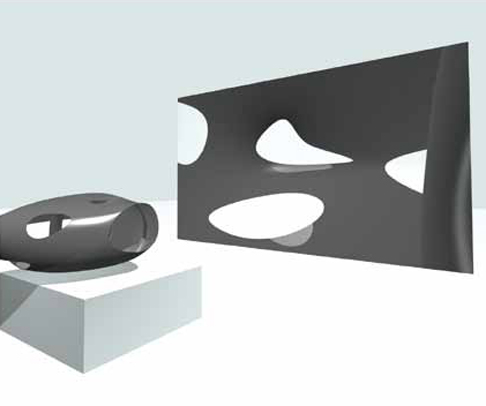
The living space does not move around you to make you comfortable, but instead you are rolled and must climb, tumble, traverse and spelunk across the ergonomic surface like a mountain goat, a Pilates disciple, a Parkour Tracuer or wannabe Spiderman. Instead of a baronial interior of luxury materials, in order to be movable, the materials and construction methods of the RV Prototype replace masonry and steel with lightweight, high strength cloth bonded to either a wood or cork core. To be affordable and responsible the 60m2 living space is distributed across the surface of the interior rather than just across the floor; thereby reducing the literal and energy footprint.
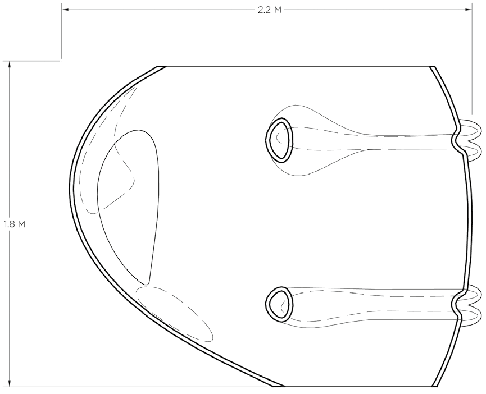
Intelligent Environments
Because of contemporary digital communication, entertainment and the intelligent control of machines, the world expects more from the physical environment today. Adaptation, intelligence, personalisation, bespoke manufacture, home delivery via fulfillment centers, targeted marketing, on-demand entertainment, personalised fast food ordered from secret menus, are the modes of desire and fulfillment that move us through the world. Myriad forms of intelligence have penetrated screens, print, transportation, appliances and even furniture as we are immersed in an environment that knows who we are, what we want and can therefore respond to our needs and desires at their formation.
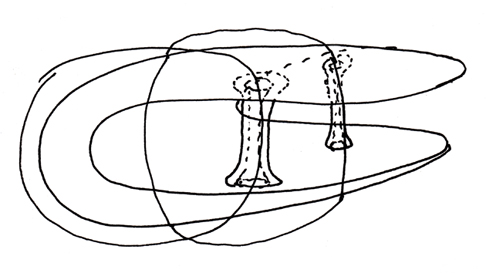
Comfort with Motion
In the 1940s two typologies emerged promising comfort, freedom and dynamic motion: the recreation vehicle and the Barcalounger or La-Z-Boy mechanical recliner. Today’s recliners include PowerLiftTM, PowerReclineTM and PowerShiatsuTM, offering massages, heating and cooling, home entertainment control integration, food and beverage coolers, as well as recline, glide, rotate, lift and rocking motion. The motion of hospital beds is now available for the home in the Craftmatic. The RV Prototype brings the intelligence, comfort and freedom of motion of these furniture typologies to the entire living environment.
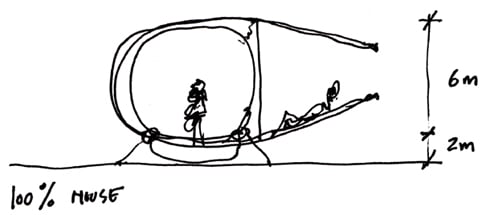
Reduced Footprint
By living on the walls, floor and ceiling, the volume and material of the living environment is reduced and used in a more high performance manner. Through rotation, the 60m2 living environment is thought as a wrap-around surface rather than as a platform. Like in a NASA capsule or a space station the ergonomic surfaces are not limited to the floor. The ability to rotate the living environment in response to the weather, daylight and temperature also optimizes environmental quality.